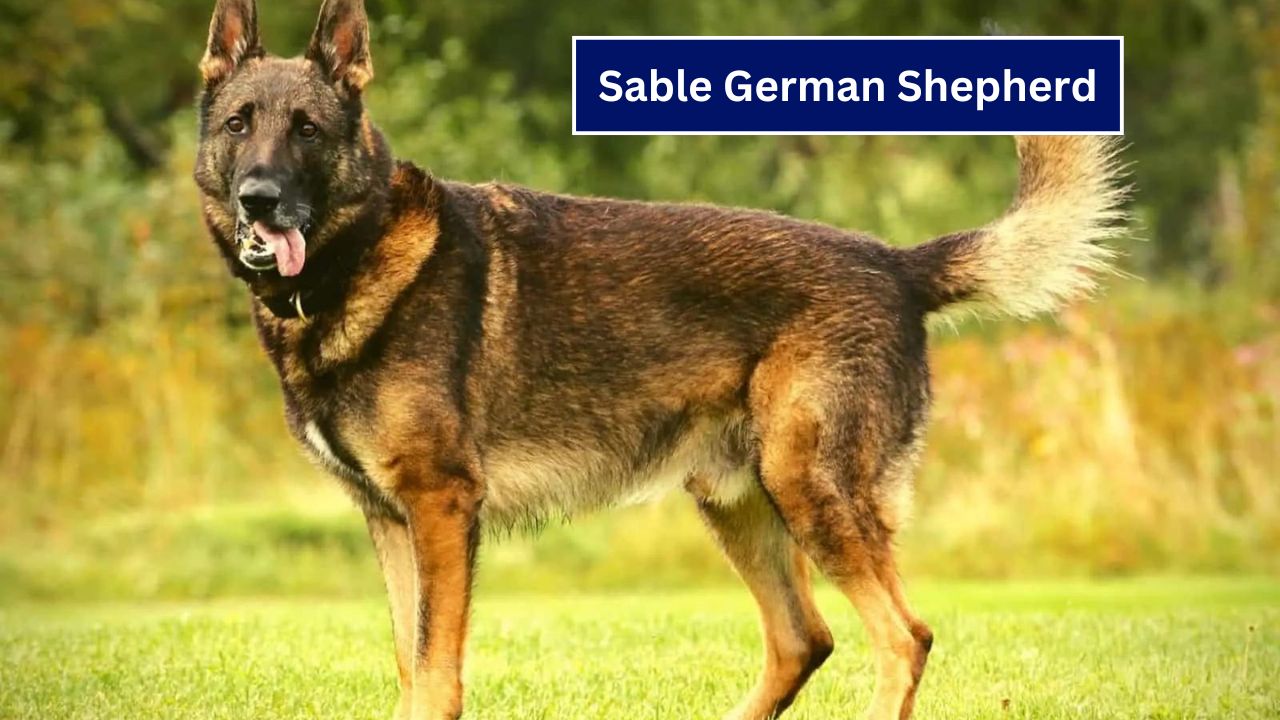The Sable German Shepherd is a striking variation of the German Shepherd breed, distinguished by its unique coat coloration and distinctive markings. This article delves into the characteristics, history, care, and more about this remarkable breed.
Sable German Shepherd complete guide
History and Origin
The German Shepherd breed originated in Germany in the early 20th century, developed by Max von Stephanitz to create an all-purpose working dog. The sable coloration, while less common than black and tan or solid black, is a natural variation within the breed. Sable German Shepherds share the same lineage and qualities as their more common counterparts, with their unique coat color being a result of genetic variation.
Physical Characteristics
Coat Color and Pattern
The sable German Shepherd is known for its striking coat color, which can range from light tan to dark gray, with a blend of black tipping. The coat has a distinctive pattern where the individual hairs are banded with different colors, giving the sable German Shepherd its unique appearance.
Size and Build
Sable German Shepherds have the same size and build as other German Shepherds. Males typically weigh between 65 to 90 pounds, while females range from 50 to 70 pounds. They have a strong, muscular build with a well-balanced, athletic appearance.
Temperament and Personality
Sable German Shepherds possess the same loyal, intelligent, and energetic temperament as other German Shepherds. They are known for their:
- Loyalty: They form strong bonds with their families and are protective of their loved ones.
- Intelligence: Highly trainable and quick learners, making them excellent working dogs.
- Energy: They require regular exercise and mental stimulation to keep them happy and healthy.
Training and Exercise
Training
Sable German Shepherds are highly trainable due to their intelligence and eagerness to please. They respond well to positive reinforcement techniques, and early socialization and obedience training are crucial to ensure they develop into well-rounded adults.
Exercise
This breed needs ample exercise to maintain its physical and mental health. Daily activities should include long walks, playtime, and engaging in activities like agility training or obedience trials.
Health and Care
Common Health Issues
Like all German Shepherds, sable variants are prone to certain health conditions, including:
- Hip and Elbow Dysplasia: Genetic conditions affecting the joints.
- Degenerative Myelopathy: A progressive disease of the spinal cord.
- Gastric Dilatation-Volvulus (Bloat): A potentially life-threatening condition where the stomach twists.
Grooming
Sable German Shepherds require regular grooming to keep their coat in good condition. This includes:
- Brushing: Regular brushing to manage shedding and prevent matting.
- Bathing: Occasional baths to keep their coat clean.
- Nail Trimming: Regular nail trims to prevent overgrowth.
Living with a Sable German Shepherd
Sable German Shepherds thrive in homes where they receive plenty of exercise, mental stimulation, and social interaction. They are adaptable and can live comfortably in both urban and rural environments, provided they have enough space to run and play.
FAQ
What is a sable German Shepherd?
A sable German Shepherd is a variation of the German Shepherd breed with a unique coat color. The sable coloration involves a blend of black-tipped hairs on a base color that can range from tan to gray.
Are sable German Shepherds good family pets?
Yes, sable German Shepherds are excellent family pets. They are loyal, intelligent, and good with children when properly socialized. They require regular exercise and mental stimulation.
How do I train a sable German Shepherd?
Training a sable German Shepherd involves positive reinforcement techniques, consistency, and early socialization. They are intelligent and eager to please, making them highly trainable.
What kind of exercise does a sable German Shepherd need?
Sable German Shepherds require daily exercise, including long walks, playtime, and mental activities. They benefit from engaging in activities like agility training or obedience trials.
Are sable German Shepherds prone to any health issues?
Yes, like all German Shepherds, sable variants can be prone to health issues such as hip and elbow dysplasia, degenerative myelopathy, and bloat. Regular veterinary check-ups and proper care can help manage these risks.
Conclusion
The sable German Shepherd is a stunning and versatile variation of the German Shepherd breed. With their striking appearance and exceptional qualities, they make excellent companions for those who can meet their exercise and mental stimulation needs. Proper care, training, and regular veterinary visits will ensure that your sable German Shepherd leads a healthy and fulfilling life.
